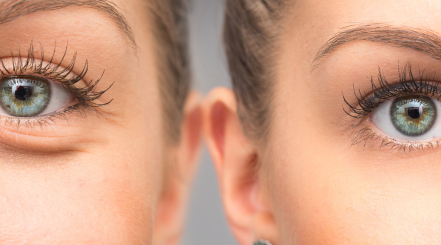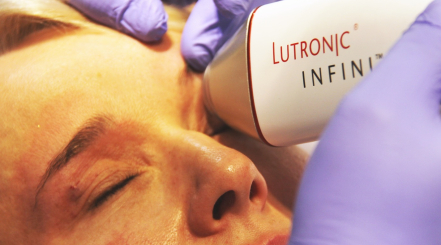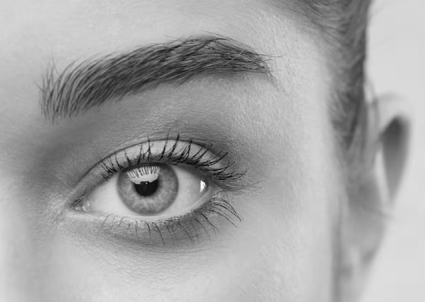Hamster cheeks look sweet but … only on actual hamsters

Hamster cheeks look sweet but … only on actual hamsters
The loss of the natural oval of one’s face is one of the major problems associated with the aging. As of an age of approximately 40, changes in facial skin density start to become noticeable at the first sight as a blurring of the contour of the mandible. The skin becomes “thinner” and its lax folds no longer “fit” within the facial profile. The aesthetic medicine often calls this effect the “hamster cheeks”. Although the term sounds inoffensively and often carries no bad connotations, the very existence of the problem raises a major body dissatisfaction in many women. Fortunately, we know how to help.
“Hamster cheeks” – what is it?
When we think about hamsters, what comes to our minds is the cute little fur-bearing animals that many of us are very fond of. However, this apparently nice sounding term has stuck to the problem that really troubles many mature women. With age, the human body loses is ability to produce collagen – the substance responsible for the density and firmness of the skin – which is followed by the occurrence of an increasing number of aesthetic problems. The hamster cheeks are one of them. While gradually losing its firmness, at certain point the skin starts to yield to the force of gravity and develops not only wrinkles but, worse, folds on the both sides of the mandible. The first symptoms of the skin sagging can be observed as early as at an age of forty plus and a vast majority of women in their fifties do have excess lack skin in this area. The hamster cheeks can be a real problem to the wearer: the face loses is natural oval and can look tired or gloomy. Proper skin care and protection from sunlight can help delay the development of this, and many other, problems associated to the aging of the skin. However, when someone has noticed a significant change in the contour of their face, it may be the right time for them to consider a personalized aesthetic medicine treatment.
The eradication of the hamster cheeks with the HIFU method
The High Intensity Focused Ultrasound method uses high frequency sound waves to lift the skin – as effectively as a surgical procedure but much less invasively. The treatment is very comfortable, painless and does not break up the continuity of the skin, so there is no need for any convalescence at all. Ultrasound technologies are very well known to medicine but the HIFU method is a recent development considered as one of the most advanced and groundbreaking inventions among visual skin improvement therapies. Powerful high frequency sound waves heat up deep tissue layers while leaving the epidermis intact. This pointwise action stimulates the natural production of collagen to firm up and tension the skin. This is why the unwanted hamster cheeks lose their prominence and the face oval becomes smoother. The initial effect is noticeable directly after the treatment but it takes the tissues 1 to 3 months to rebuild and show the ultimate result. The HIFU procedure can be applied at any time of the year. As a standard, the treatment should be repeated annually to keep the young look of the face and leave the chubby facial attribute to its rightful owners.
The contemporary pace of life vs. the masseter muscle hypertrophy (AKA trismus or bruxism)
The pace of our lives has become significantly faster over the recent decades. Many of us live very intensively, making every effort to find a balance between the work, family life and self-development. We tend to sleep less, have little time for R&R and the more we climb the ladder, the more we are consumed by stress. Finally, we find out that we are chewing our nails or the tip of a pen, our partner keeps complaining that he or she cannot sleep because of our grinding of teeth, and our dentist tells us that our tooth enamel continues to deteriorate. . Trismus, a consequence of the hypertrophy of the masseter muscles, is an ailment that has already been recognized as a disease of the 21st century. How to deal with it?
When stress eats the teeth
The daily stress affects almost everyone. Not only both achievers and, on the other extreme, those who barely made ends meet but also young adults and even children. The contemporary world challenges us in many ways and puts us under pressure from other people and from all kinds of expectations oriented on results – all that in an environment of a permanent scarcity of time. This cannot be inconsequential to our health. A long-term stress creates many problems and leads to various afflictions. Trismus (bruxism) is one of the prevailing ones. According to some studies, as much as 40 percent of the population is affected by this syndrome manifested by the involuntary and unconscious clenching of the jaws, typically during sleep. Up to one half of these people are unaware of the problem. Many learn about it first from a partner complaining about the grinding of teeth at night (a cause of the undersleeping similar to the snoring) or from a dentist. The seriousness of the condition should not be underestimated. The grinding produces dental abrasion, which can lead to a tooth enamel damage or, worse, a permanent degenerative disorder in the mandibular-temporal joints. The latter is a cause of tension-type headaches, commonly diagnosed as the migraine, as one of the many unpleasant consequences.
How to diagnose bruxism?
There can be more causes to the abrasion of teeth, other than bruxism, so we should pay attention to the additional, specific, symptoms of the disorder. Many persons complain about the feeling of stiffness and fatigue in their masseter muscles. Some can experience jerks in their joints while eating or difficulties with the wide opening of their mouth. Morning headaches are another frequent symptom. So, if someone lives in a rush and experiences such afflictions, this can be trismus. If the disease lasts long enough, it can change the oval of the face: the hypertrophy of the masseter muscles will make the contour of the mandible broader and more rectangular.
How to prevent?
Trismus can be treated conservatively, by overnight application of special relaxation braces for protection against excessive dental abrasion and for alleviation of pain through the relaxation of the muscles. However, the injection of the botulin toxin of type “A” in the masseter muscles is one of the most effective of the existing methods. The toxin relaxes the muscles, which inhibits the grinding reflex. Accordingly, the mandible line gets smoother and the face oval takes on a slenderer shape. The action of botox is often compared to the induction of paralysis but this is not how the toxin actually works. In fact, it inhibits the conduction of nerve impulses in the muscles but without causing palsy, so the patient retains full control of the movements of his or her mandible after the treatment. The effect of the injection lasts just a few months but, during this time, the masseter muscles are significantly relieved, which leads to a decrement in their volume and strength. The treatment is typically repeated every six months.








